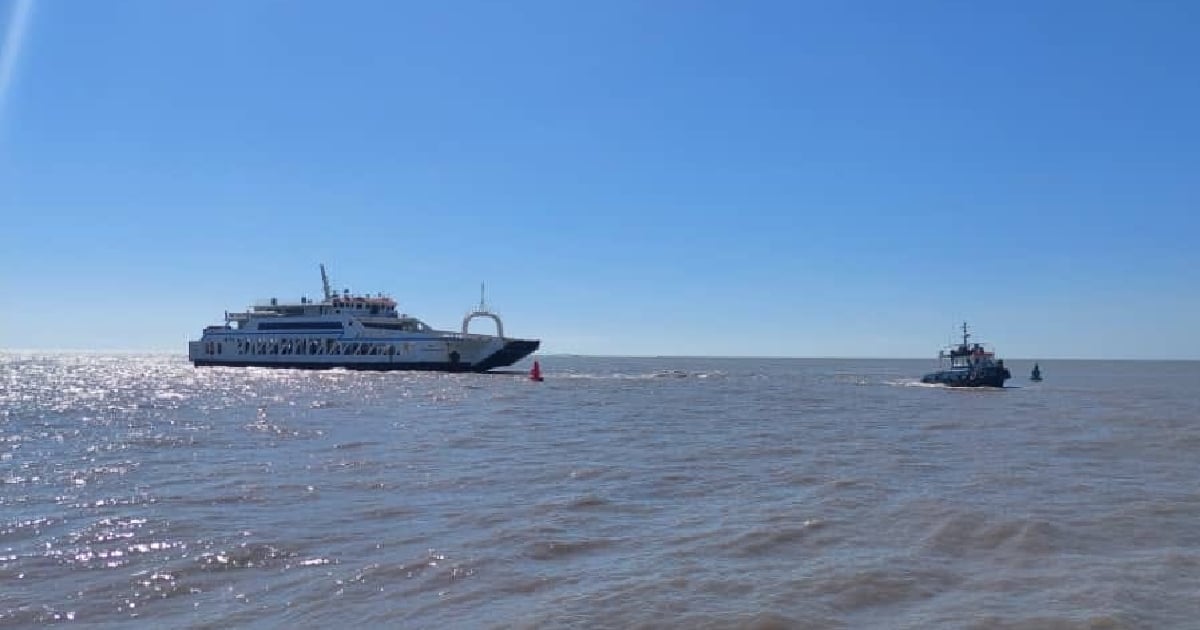
Passenger transportation on the ferry Perseverancia between the port of Batabanó, in the province of Mayabeque, and the special municipality of Isla de la Juventud has been resumed this Sunday, after being interrupted for several days due to the impact of Hurricane Rafael in western Cuba.
The Minister of Transport, Eduardo Rodríguez Dávila, announced on social media the docking of the ship in Surgidero de Batabanó this afternoon, thus resuming maritime passenger transportation between the two points following the cyclone's passage.
"All measures had been taken to prevent the ferry from docking with its engines running, to avoid damage to the motors, propeller, and rudder from hitting the seafloor, which happened more than once," the official explained.
"It was a maneuver that lasted half an hour, longer than usual, and with the support of a tugboat, as planned," he said. "All 410 passengers have disembarked, and in a couple of hours, the ferry should make the return trip to the Isle of Youth."
Rodríguez highlighted "the expertise and coordinated action of the ferry captains, Cristóbal Jorge Gómez, and the tugboat Polar 11, Juan Rafael Ameijeiras, along with their crews," to address "the slight grounding that this important vessel encountered a few meters from the docking slab."
The leader stated that "special measures" were adopted after divers from Antillana de Salvamento and specialists from GEOCUBA conducted an underwater monitoring on Saturday to "assess the sediment accumulation effect following Hurricane Rafael's passage at the entrance channel of the port."
According to the Minister of Transport, the experience of this first journey following Hurricane Rafael will undergo a "thorough analysis" by maritime safety specialists to make decisions that will "prevent accidents jeopardizing passenger safety and damaging such an important mode of transportation."
Hours earlier, it had been reported that the port of Batabanó was back in operation after its activities were halted for several days due to the impact of the hurricane.
The port was rendered inoperative due to "the loss or displacement of some buoys" as a consequence of the cyclone, which hindered the transportation of passengers to and from the Isle of Youth.
Rodríguez indicated that the state company GEOCUBA and others from the Maritime Port Business Group (GEMAR) worked "quickly to relocate the buoys and restore the port's operations," allowing the ferry Perseverancia to dock in Surgidero de Batabanó on Sunday afternoon, thereby resuming the connection with the Isle of Youth.
On Thursday, the ship returned to the Las Casas River in Nueva Gerona, "without any damage," as stated by the minister, after being sheltered in the cove of La Siguanea due to the hurricane's impact.
Hours after the weather event, the official reported on social media that the ferry, the three catamarans, and the port of Isla de la Juventud were in "positive conditions."
He assured that neither the port of Gerona nor the vessels docked there suffered significant damage from the cyclone passing near the special municipality.
Hurricane Rafael, the second to strike Cuba in just over 15 days, dealt another harsh blow to the country amid the severe economic crisis it has been enduring for five years.
The most significant damages were reported in the provinces of Artemisa and Havana, with collapses and severe damage to homes and other buildings, as well as to the electrical and telephone networks, primarily.
The passage of Hurricane Rafael caused severe damage to agriculture in the provinces of Artemisa and Mayabeque, two of the largest food producers in Cuba. The losses are particularly severe in Artemisa, where damage was reported in 100% of the 9,000 hectares of cultivated bananas.
During the evening of November 6, the cyclone crossed the western tip of the island from south to north, initially as a category 3 hurricane on the Saffir-Simpson scale, which has a maximum of 5, and later downgraded to a category 2. Its maximum sustained winds reached up to 185 km/h, and the rainfall totaled up to 200 liters per square meter, resulting in widespread flooding and significant destruction everywhere.
What do you think?
COMMENTFiled under: